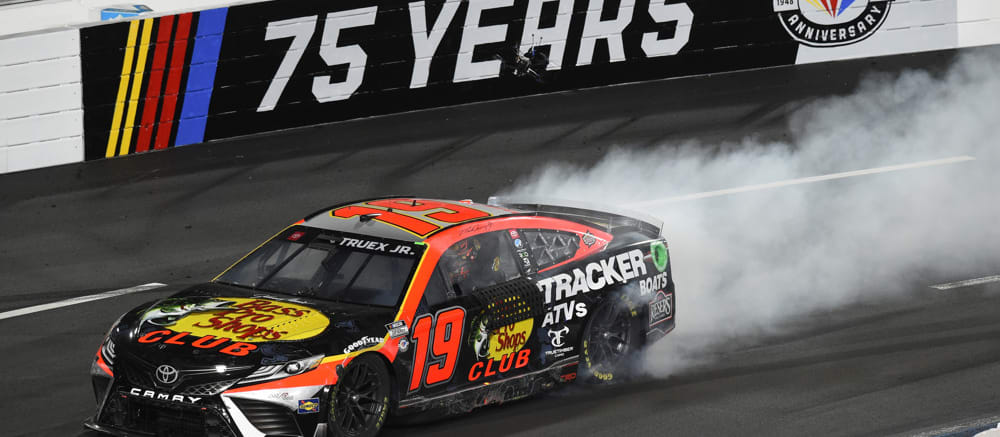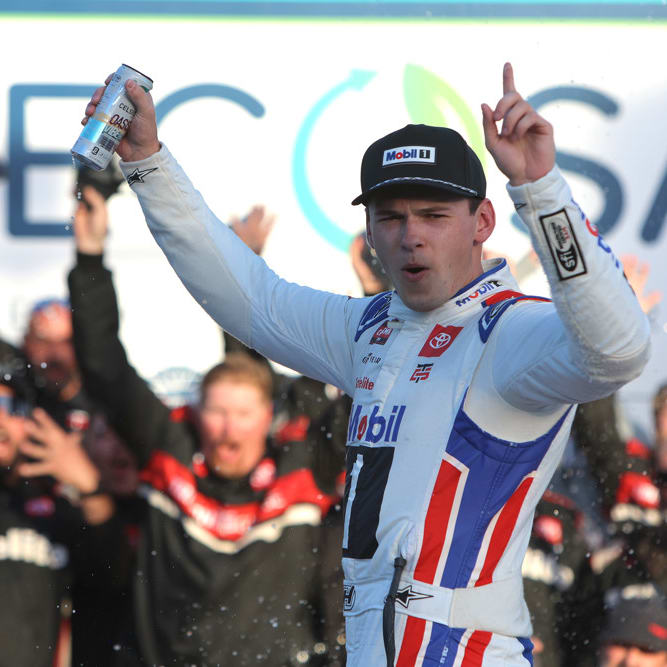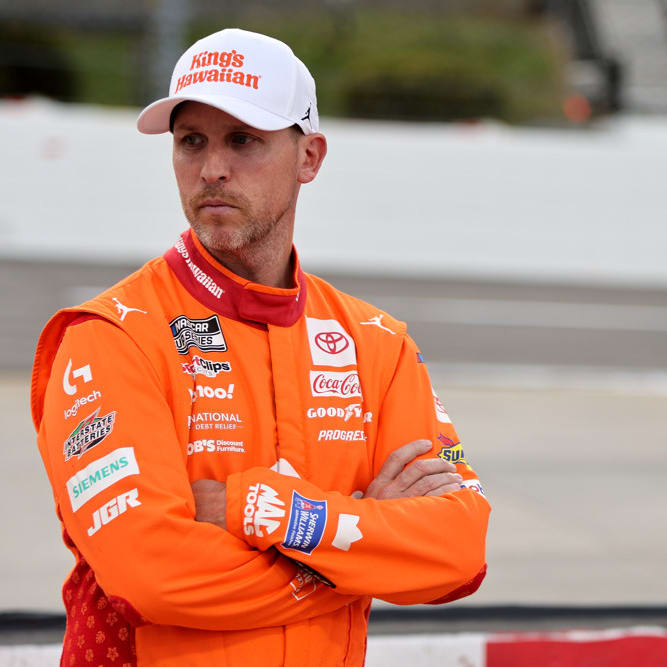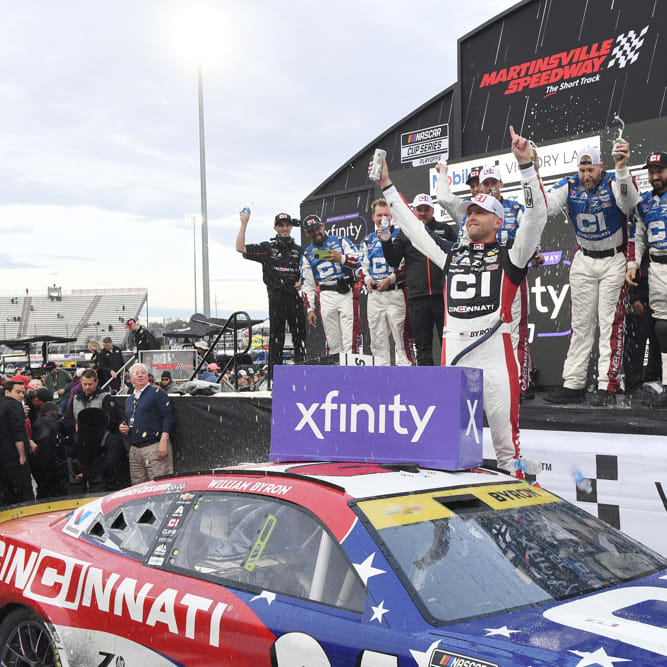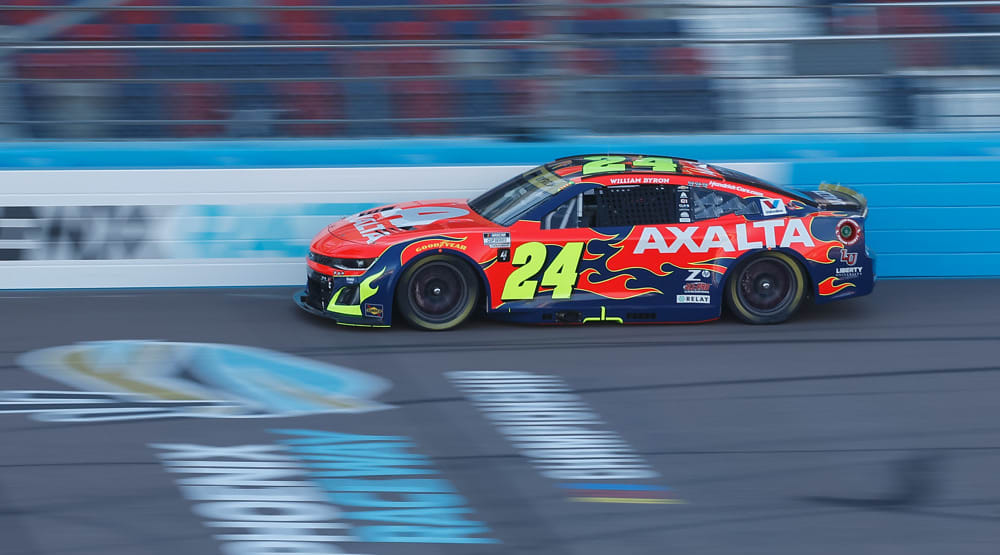NASCAR DFS Strategy
The 2023 NASCAR season is upon us! This has always been one of my favorite sports to play for fantasy purposes and will give you a sweat all the way from green flag to checkered flag. There are multiple strategies that need to be implemented depending on the type of track the race is at, as well as where drivers qualify.
My goal for this article is to help you improve as a DFS player in NASCAR. I hope to do this by giving you a high level overview of the way I attack a slate and some of the things I look for in drivers each week. This in conjunction with our weekly strategy articles will help you build lineups in a way you are positioned for success over the course of the season. Without further ado, let's jump in.
Overall Strategy
There are 4 different ways that drivers accrue points on DraftKings for NASCAR.
· Place Differential (+/- 1 Pt) – Simply, the amount of position difference a driver finishes from his starting position.
· Fastest Laps (+0.45 Pts)
· Laps Led (+0.25 Pts)
· Finishing Position (1st +45 Pts, 2nd +42 Pts, 3rd +41 Pts, every position's worth then decreases by 1 Pt until last place, except when you cross each 10th position which then decreases by 2 Pts.)
A lot of the overall strategy for each slate depends on the track each week. For example, at superspeedways (Daytona and Talladega) laps led and fastest laps are almost always spread out across a lot of drivers. This makes place differential mean a lot more at these tracks. At short tracks (Martinsville, Bristol, etc.) there are usually a few people that lead a bunch of laps. This is due to the type of track as well as how many laps there are in these races. This makes laps led and fastest laps more important.
Track strategy is something we will talk about each week in our articles. We will give an overview of past history at each track and what the build strategy is for the week.
Qualifying and Practice
This is one of the most important parts of the week when it comes to NASCAR DFS. Qualifying can sometimes change a play from a fade to an all in play. If a top driver has something go wrong in qualifying, or has to go to a backup car, and starts in the back of the field they become one of the best plays of the week. On the other hand if a driver who hasn't been showing much speed lately, or during practice, qualifies pretty high in the field, they lower their upside and are more than likely going to back up during the race (lose place differential).
This all has to do with the place differential. For example, if Martin Truex Jr. has to go to the back of the field and is scored from the 40th starting position, he has a much higher floor and upside than if he was starting 10th. This would also lead to much higher ownership of him as well. In these cases it is very hard to fade the driver and most of the time it is not in your best interest to do so.
Practice can give us a good idea of what cars are fast for the weekend. I will not look at individual lap times as there is a lot of variance when you look at who had the fastest one lap in each session. What I will look at is averages over certain numbers of laps. On five and ten lap averages we are able to see who has short run speed. When we extend that to fifteen and twenty lap averages, we can see who has long run speeds and will not have their times fall off as much when the green flag is out for a long period of time in the race.
Track History
Much like in golf, when a player plays well at a particular course, in NASCAR some drivers are better at certain tracks. Some track styles match a driver's abilities more than others. This is obviously not an end all, but does give you a good idea as to how the driver does at this track type.
Past races can tell us a lot about the type of lineup build we need for the week. They will help us figure out how many place differential plays and how many dominators we should be targeting in our lineups. This is something that I will go into more detail about below.
Build Strategy
I believe one of the biggest ways I can help you each and every week is by talking through lineup construction. In NASCAR, lineup construction is very important because depending on the track you are at can determine how many dominators and how many place differential plays you should be targeting. I will define both of these below.
· Dominators – These are drivers that you believe will gain a lot of points from leading laps or getting fastest laps (dominating the race). These are usually drivers on the best teams and in the fastest cars in a given week. A lot of this goes back to qualifying, since most dominators will start high in the order. Sometimes though, a driver who has a very fast race car but has to start from the back due to failed inspection, or some other reason, could still dominate later in the race. This makes them an even better play when you add in their place differential upside.
· Place Differential Plays – As defined above these are usually drivers starting near the middle to back of the field that have upside to finish a decent amount above where they are starting.
At each track there is a balance as to how many dominators you should target in your lineups. To use the same example as above, at superspeedways where laps led and fastest laps are more spread out, it may even make sense to target 0 dominators and to focus on place differential plays. On the other hand, at short tracks you may target 2-3 dominators in a lineup, hoping that those 2 or 3 drivers lead most of the laps. This varies a lot based on track type and even qualifying. Again, qualifying is so important because it can promote certain builds depending on if there is a surprise and a good driver starts towards the back, or vice versa.
2023 NASCAR Draft Kit
- Driver Rankings
- Driver Projections
- Top Rookies
- Sleepers & Busts
- Track Specialists
- 2022 Final Loop Stats
- What's New for 2023


